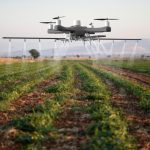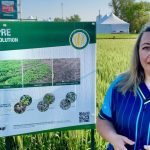Tag Archives herbicides

Herbicide approved for industrial use by drone

Bayer offers up new herbicide combo to dog resistant weeds early

Two class action lawsuits take aim at paraquat
Canadian legal actions will attempt to prove a link between the agriculture chemical and Parkinson’s disease

Pesticides under fire in U.S.
Recent court decisions have threatened farmers' abilities to use some herbicides

Crop spraying in Europe sees high scrutiny
A British sprayer operator highlighted differences in sprayer awareness between Canada and the U.K.

How important is water quality for spray applications?
It’s garnering more attention in a less forgiving world

Drift: The dreadful ‘D’ word in crop spraying
Herbicide drift can cause crop damage and have other repercussions

US allows farmers to use existing supplies of dicamba weedkillers
An Arizona court decision vacated the EPA's registration of dicamba-based herbicides

Drone spraying unlikely for the foreseeable future
The regulations and spray dynamics are more complex and unforgiving

New genetic vulnerability to herbicide found in nearly 50 sweet and field corn lines
Science Notes: Team documents 49 sweet corn and field corn inbreds suffering moderate to severe injury
